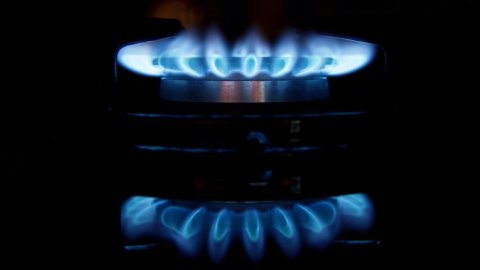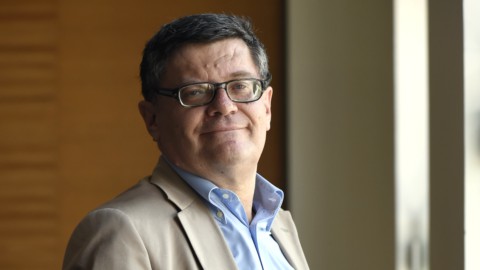When we talk about gas, we always have the impression of being faced with a huge puzzle in which some pieces are always missing. At the moment it is above all the price tag to capture the attention, but in its surroundings the building blocks are also decisive price ceiling, of infrastructure financing, the expectations of incentives, taxation, while in the background the Commission is trying to build a regulatory outline that presents many crossed grids which, moreover, continue to change their design.
This is the picture that emerges from the latest report of REF Research Laboratory on the European Union gas regulation in the current geopolitical and energy context.
The spiral of prices: war yes, but above all fears of scarcity
What seemed like a discounted resource and within everyone's reach, suddenly, due to a succession of events, appeared in all its precariousness and they were just concerns about its shortage to trigger the first price spiral.
The outbreak of war in late February only exacerbated tensions that were already underway.
“2021 had already seen gas prices at record levels, with daily peaks of more than 10 times the minimum levels reached in 2020 at the peak of the pandemic, placing themselves on values 5 times higher than the average of the last ten years” says the research institute.
The explanation is not in the production costs, but in the scarcity of material. The contributing causes are the most varied: colder temperatures in north-eastern Asia, shortage of supply (slowed down by the pandemic and uncertainty about environmental policies), the weak filling of stocks in Europe (especially those controlled by Gazprom) and the high summer emptying pursued by traders against the growth of spot prices and, finally, the global economic recovery, higher than forecasts, especially in China. The result is that, for the first time, the gas price has risen above that of crude oilin terms of equivalent calorific value. Then came the war in Ukraine to make matters worse.
While Russian supplies have not so far been affected by the sanctions and have indeed grown compared to 2021, it is still the fear of a new squeeze - for example with a block on supplies - that causes prices to skyrocket to over €220/MWh, to then see a relative and precarious one stabilization around 100 euros. These price increases - with repercussions also on the electricity markets - have caused complex effects on businesses and consumers, which are often difficult to calculate.
On the consumer side, the picture is also complex
With the liberalization of markets, many have chosen contracts that provide for fixed prices or only partial indexation to spot prices. For example, in Italy, according to data from the regulatory authority, 84% of customers on the free electricity market and 74% on gas have chosen fixed price contracts for at least one year, thus resulting temporarily protected from the evolution of international fuel prices, even if the benefit could be significantly reduced when the contracts expire.
The impervious road to the price ceiling
The hypothesis of setting prices in line with i average procurement costs, in a context where the market is divided among many operators, is not feasible. It would be a question of setting different prices for each operator and probably for each country, but this would require the blocking of competitionunless we allow lower-cost operators to empty the market shares of higher-cost ones. We would therefore have a total reversal of the principles of the European market, which does not appear possible even on a temporary basis, says Ref.
More promising seems to be greater use of the tax leverage, already used albeit timidly in various countries, including Italy, and which can make use of the experience accumulated above all by nations rich in energy raw materials, which for decades have been familiar with the fluctuations in the prices of fossil fuels and have learned to face them.
Many of these countries have one triple corporate taxation producers of oil, gas and coal: a fixed tax commensurate with production, which in fact becomes part of the cost of the same (royalty), the ordinary taxation of business profits, common to most productive sectors and a specific tax on profits from sales of fossil fuels, calculated on the basis of standard production costs and sales prices, which comes into effect only when extraordinary profits occur with higher rates.
The revenue from the extraordinary taxation can be used to set up funds, with a limited duration, suitable for offering a temporary consumer protection (civil and industrial) particularly affected by the increases, as well as to finance energy efficiency programs. The temporariness makes it possible to keep these consumers "alive", without taking away from them the incentive to adopt industrial, contractual and financial strategies capable of better dealing with future shocks, also by modifying, where necessary, products and production processes or switching to the use of sources renewable.
Hydrogen could be the way forward
Probably hydrogen will play the main role, but the issue of funding will have to be addressed in order to develop the networks and some may want to wait for the incentives before taking any step.
'Shydrogen access, a general limit of 5% is established for blending in the natural gas networks and access to the market (in particular to the hubs which should be formed in analogy to those of natural gas) will also have to be allowed starting from the possible connection to the distribution networks, says Ref. The splitting (unbundling) is envisaged at the outset, so as to avoid the formation of integrated operators who control both production and sales as well as transport and distribution, with the ownership unbundling of the distribution networks transport as a normal solution.
However, until 2030, hydrogen networks will be able to avoid regulated tariffs and instead provide a negotiated access systemprovided that it is transparent and non-discriminatory. The automatic transfer of the licenses and authorizations already held by the natural gas network operators will be granted in the event that these are intended for the transport of hydrogen (repurposing).
Other renewable gases such as biogas or biomethane deriving from agriculture and the cycle of urban waste, without neglecting hydrogen produced with a low carbon content and the prospect of developing a transport network parallel to that of gas is accepted, even if there are no official forecasts.
The crux of the networks: who builds them and above all who pays for them?
But one of the most controversial aspects is certainly the financing of the development of the networks. On the one hand, the possibility of cross-subsidies from gas networks, which would probably provide a large part of the funding, on the other hand the possibility of mechanisms tariff compensation, in particular (after 2030) for the development of missing interconnections between different national systems.
However, this prediction could lead some countries (and their operators) to wait for incentiveseffectively delaying market development and competition.
The theme of storage and strategic reserves
In terms of supply security, the unprecedented leap in prices seems to have prompted Europe to accept the opinion - hitherto a minority - about the usefulness of mandatory storage filling measures or the creation of strategic reserves, thus accepting the a view hitherto defended by France, Italy, Spain, Hungary and a few others. Also in this area, the implementation contains numerous pitfalls and controversial issues, such as that of the definition of the mechanisms for sharing the available resources and their cost.
Sometimes events force you to make a U-turn
The crisis came just as the proposals to reform the gas market had just been launched by the European institutions - with the new Gas Package – which was going in a completely different direction: under the star of decarbonisation, it aims to define a regulatory framework to be able to abandon the natural gas that everyone now wants and move towards other gases of a renewable nature, including hydrogen.
In fact, in recent years, operators seem to have accepted the possibility and opportunity to produce, transport and use renewable gas, relying on their structural advantages compared to electricity: in particular the considerably lower transport and storage costs, through methods of integration with the electricity sector (such as power to gas technologies) and with the oil sector, as well as through solutions for the seizure, storage and reuse of carbon. We are talking about a wide range of technological solutions, often innovative and competing with each other, whose future is far from obvious, says Ref.
Implementing the package may take less time and effort than it was needed to natural gas, given the previous experience, the reduced resistance of pre-established interests and the strengthening of the Commission's powers of subrogation.
However, some delicate aspects, such as the compensation mechanisms between different managers, could be a source of lengthy disputes and delays, as was the case, for example, with the compensation system required between electricity transmission operators.
In Europe, the very perception of transfers of resources between countries, even limited, always arouses great suspicion, and has so far been generally avoided in the gas sector.





